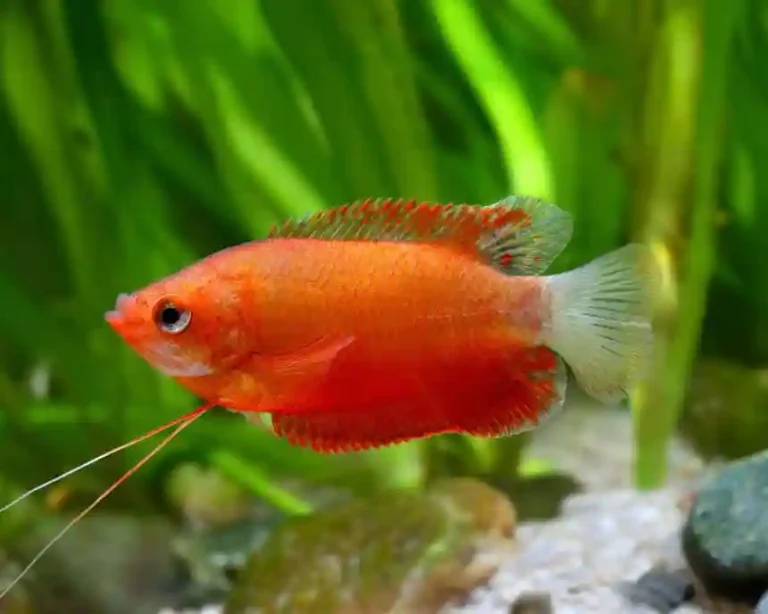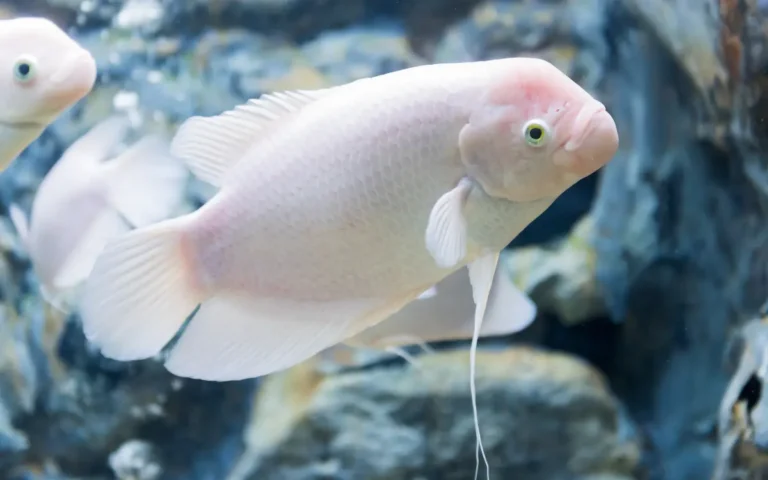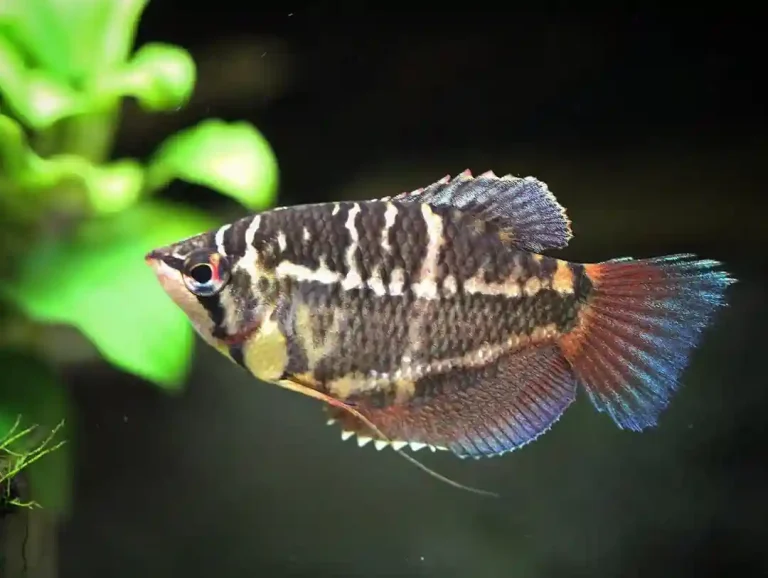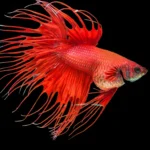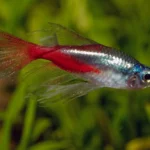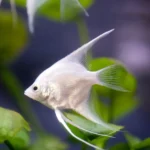Clown Killifish, also known as Rocket Killifish, are one of the most eye-catching nano fish in the aquarium hobby. With their torpedo-shaped bodies, banded patterns, and flowing tail fins, they’re a joy to watch dart around the top of the tank. Even better? They’re peaceful, hardy, and fit beautifully into planted and nano aquariums.
In this guide, we’ll cover everything you need to know about keeping Clown Killifish healthy and activefrom tank setup to feeding, behavior, and even breeding.
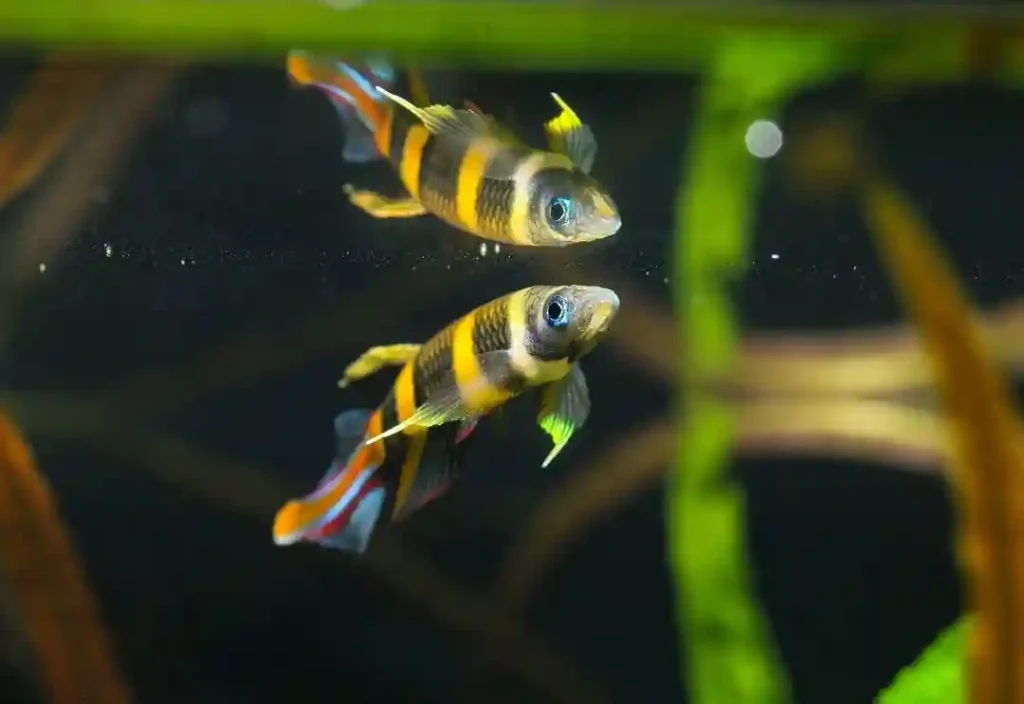
About the Clown Killifish
Species Overview
- Scientific Name: Epiplatys annulatus
- Common Names: Clown Killifish, Rocket Killifish, Banded Panchax
- Adult Size: Around 1.2 to 1.5 inches
- Lifespan: 3 to 5 years
- Temperament: Peaceful
- Tank Zone: Surface dweller
Clown Killifish are native to shallow, slow-moving water in West Africa. Their bold stripes and tail that fans out like a rocket trail make them look like tiny aquatic fireworks.
Ideal Tank Setup for Clown Killifish
Minimum Tank Size
Because they’re small, Clown Killifish do well in 5–10 gallon tanks. A 5-gallon tank is fine for a small group, but if you want to keep them with other fish or breed them, go for a larger planted setup.
Want more nano-friendly species? See our Small Aquarium Fish list.
Water Parameters
| Parameter | Ideal Range |
| Temperature | 72–78°F (22–26°C) |
| pH | 6.0–7.5 |
| Hardness | Soft to moderate |
Use a heater in colder months and test water weekly to keep conditions stable.
Filtration and Flow
These fish come from still or slow-moving streams, so avoid strong current. A sponge filter is perfect—it keeps the water clean while maintaining gentle flow.
Décor and Lighting
Clown Killifish love cover near the water surface.
- Use floating plants like Salvinia or Frogbit
- Add fine-leaved plants like Hornwort or Water Sprite
- A dark substrate makes their colors stand out more
- Leaf litter or driftwood can help mimic their natural habitat
A low to medium light setup works best. Too much brightness can stress them out.
Feeding Clown Killifish
Diet Basics
These fish have tiny mouths, so food size matters.
- Best foods: baby brine shrimp, micro worms, daphnia
- Dry food: micro pellets or crushed flakes (only if small enough)
- Live/frozen food is ideal for color and breeding health
They naturally eat insects and larvae at the water’s surface—so offer floating food whenever possible.
Feeding Tips
Feed them 1–2 small meals a day. Avoid overfeeding, especially in small tanks where excess food can quickly foul the water.
Need help with feeding? Check out our Fish Feeding Tips.
Clown Killifish Tank Mates
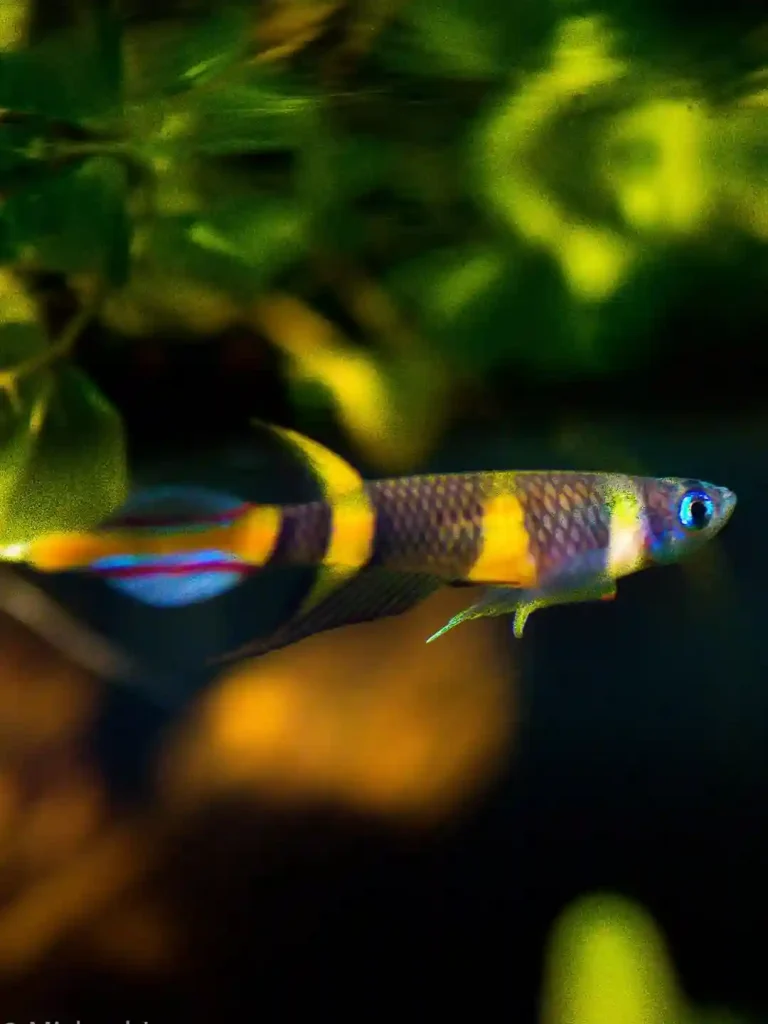
Clown Killifish are peaceful and shy, so keep them with other gentle nano species.
Good Tank Mates
- Chili Rasboras
- Ember Tetras
- Pygmy Corydoras
- Dwarf Shrimp (Neocaridina or Amano)
What to Avoid
- Aggressive fish
- Fast swimmers (like Danios)
- Large species that may see them as food
- Fin nippers
Always avoid overcrowding. These fish need calm, open swimming space near the surface.
Explore more peaceful species in our Community Fish Guide.
Breeding Clown Killifish
Breeding Clown Killifish can be a fun project—especially in a species-only tank.
Breeding Tank Setup
- Use a separate 5–10 gallon tank
- Add spawning mops or Java moss for egg laying
- Maintain warm temps around 75°F
- Use a gentle sponge filter and keep the lighting soft
Read also: Flowerhorn Cichlid Care: Tank Setup, Diet, Behavior & Breeding Tips
Spawning Behavior
Males display their colors and “dance” for females. Females lay sticky eggs on plant leaves or mops.
Caring for Eggs and Fry
- Eggs hatch in 10–14 days
- Remove adults after spawning if needed
- Feed fry infusoria or vinegar eels for the first few days
- Then move to baby brine shrimp
Fry are tiny and grow slowly, so patience is key. Frequent small water changes help them thrive.
Common Health Issues
Clown Killifish are hardy if water quality is maintained. Still, here’s what to watch for:
Potential Issues
- Fin rot – often caused by poor water conditions
- Bacterial infections – linked to overcrowding or dirty tanks
- Stress – from aggressive tank mates or poor parameters
Prevention Tips
- Keep their water clean with regular small water changes
- Use a quarantine tank for new fish
- Feed a balanced, varied diet
Are Clown Killifish Right for You?
If you love nano tanks, natural aquascapes, and peaceful fish, Clown Killifish are a great choice. They’re small, hardy, and full of personality when kept in groups.
Here’s what makes them a good fit:
- Can live in small tanks
- Peaceful and great for community setups
- Breed easily in the right conditions
- Don’t require fancy equipment
They’re also great for beginners who want something unique and eye-catching.
FAQs
Are Clown Killifish easy to care for?
Yes! They’re beginner-friendly as long as you maintain clean water and avoid aggressive tank mates.
Do Clown Killifish jump?
Yes. Always use a tight-fitting lid—they’re surface swimmers and curious by nature.
Can I keep them alone?
They’re best kept in groups of 4–6. A lone fish may become stressed or shy.
How long do they live?
They typically live 3–5 years with proper care.Do they do well in blackwater tanks?
Yes! They come from blackwater environments and thrive with leaf litter and low lighting.

